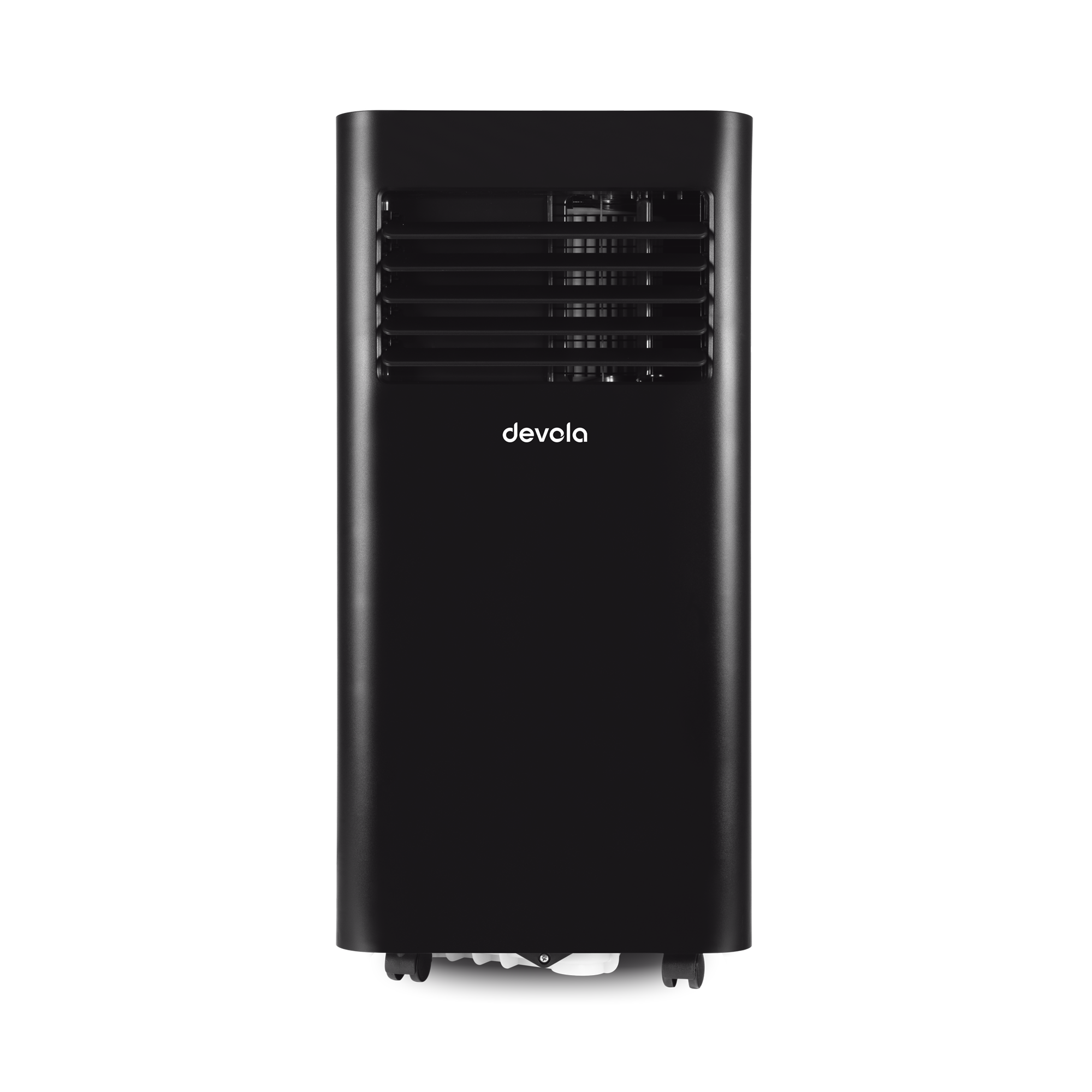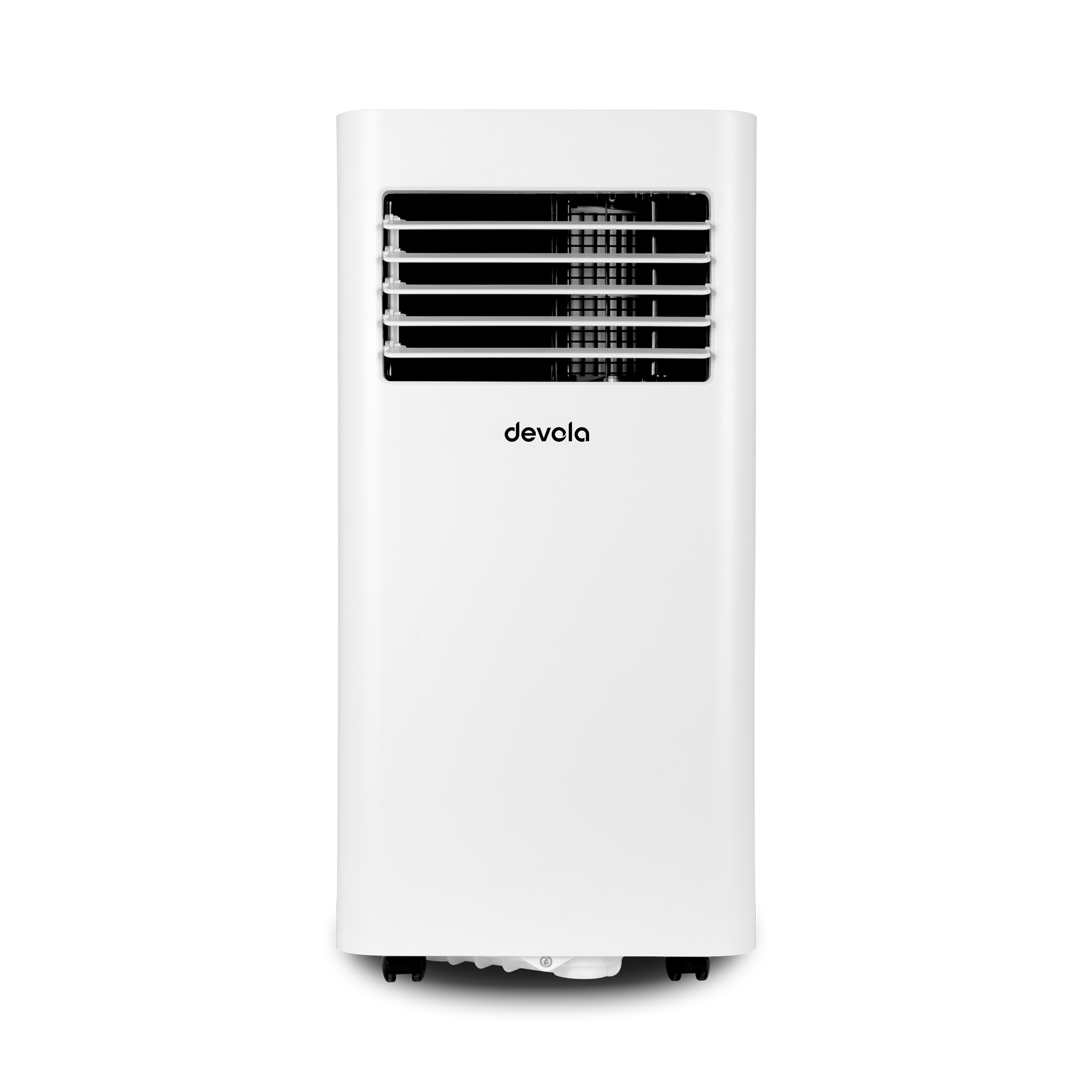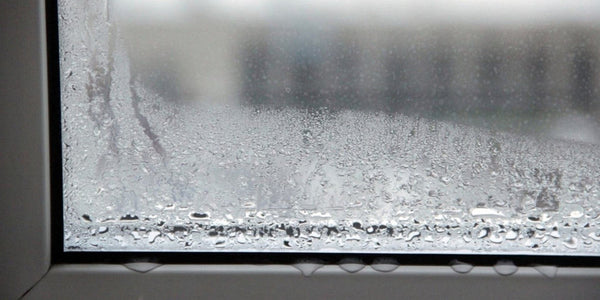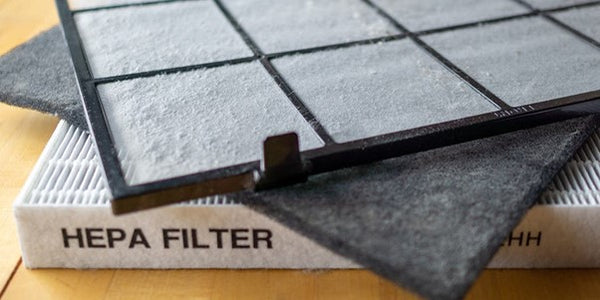With the days getting colder, you may be waking up to condensation on your windows. However, further than a sign of the season, condensation indicates there is excess moisture in your home, which can lead to property damage and health issues.

What Does a Dehumidifier Do?
A typical dehumidifier removes excess moisture in your room, helping to maintain a healthy 40-50% humidity.
Many models, however, also include filters that can help to purify your air further by removing dust and pet hair.
Many dehumidifiers also have a ‘Laundry Mode’ which means it can help to dry clothes on an airer more efficiently.
What Can High Moisture Levels Cause?
Excessive moisture can cause condensation on windows and damp areas on walls. If left untreated, walls, furniture, and clothes can become damaged, as well as other materials like books, cushions, and more. As well as this, damp can lead to dangerous mould.
Additionally, moisture levels above 60% in your home mean that dust mites and bacteria can thrive, causing respiratory irritation and issues like asthma.
How Does a Dehumidifier Work?
There are two main types of dehumidifiers, compressor and desiccant. Compressor dehumidifiers work well at colder temperatures, whereas desiccant dehumidifiers are more reliable at higher temperatures.

Compressor Dehumidifier:

- Moist air is drawn into the unit and passed over a set of cold coils
- These coils are made cold by the refrigerant in the compressor
- The newly dry air is then released back into the room
- The excess water is collected in an internal water tank or drained via a continuous drainage system
Desiccant Dehumidifier:

- Air is drawn into the fan and hits a rotating wheel of desiccant material
- This material absorbs moisture from the air
- The wheel then continues to rotate to be heated by a small heater and fan
- This warm, damp air passes through a condenser where the moisture is collected into the internal water tank (or drained)
- This heated air is then released unto the room at around 10-12°c warmer than the room temperature
Compressor vs Desiccant Dehumidifiers
|
Compressor |
Desiccant |
|
Pros: |
Pros: |
|
|
|
Cons: |
Cons: |
|
|
Which Is the Best Dehumidifier for My Needs?
|
Living Room
Compressors are ideal for living rooms where the refrigerant will work effectively at room temperature. |
Garage
Desiccants work best for garages. They can overcome the condensation and damp, and can heat up the air temperature by 12°C. |
|
Bedroom
Compressors work well in the bedroom given the higher room temperature. |
Caravan
Desiccants are ideal for caravans given their compact size and ability to operate in colder temperatures. |
|
Boat
Desiccants are perfect for boats and can be left on their own to work effectively. The dehumidifiers switch off on their own once target humidity has been reached. |
Conservatory
Desiccants are perfects for conservatories as they work most efficiently below 15°C. They can be left on their own and will automatically switch off once they reach target humidity. |
Other Things to Consider
Scenario 1: Large house / Many rooms
To effectively remove moisture from the air in many rooms, it is best to place your dehumidifier in a central area, such as a landing or hallway. Keep all your internal doors open, and the excess moisture will travel towards the dehumidifier. If you have a damp problem in a specific area, place your dehumidifier near that area for a couple of weeks before moving it back to the central area.
Scenario 2: Flooded areas or Burst pipes
In this second scenario, a Building Dryer Dehumidifier will be needed. Building Dryer Dehumidifiers will dry damp buildings quickly and effectively. They can also be used to dehumidify the air after building work, plastering, or decorating.
Features & Benefits of Dehumidifiers
- Daily Extraction Rate (L) - How much water the dehumidifier can extract in 24 hours. The more litres a unit has, the higher its extraction rate.
- Tank Capacity (L) - This refers to how much water the internal tank can hold once it has been extracted from the air. The larger the tank size, the less it needs to be emptied. However, a continuous drainage system will mean you don’t need to empty the tank.
- Power Output (W) - This is how much power the unit uses. This will help you to work out the running costs.
- Noise Level (dB) - How loud the dehumidifier is.
- Automatic Shut Off - This is when the unit senses the internal water tank is in danger of overflowing and automatically shuts off. Many dehumidifiers also have indicator lights to show when the tank is nearly full.
- Automatic Restart Function - This is when the unit automatically restarts when the power goes off (for example during a power cut). This is helpful if the dehumidifier is left alone for long periods of time.
- Laundry Mode - This is an additional feature which allows clothes to dry efficiently. In a lot of scenarios, a dehumidifier with laundry mode is cheaper than a tumble dryer to dry your clothes.
- Defrost Technology - During winter months, a dehumidifier may be working below freezing, which causes collected water in the tank to freeze. The Defrost function automatically defrosts the unit so that it continues to work normally.
- Ioniser - An ioniser attaches ions to dust particles, making them heavy and causing them to fall to the ground. The dust particles can then be hoovered or wiped away.
- Air Filtration - Dehumidifiers can come with either a Dust, Anti-Bacterial, or HEPA Filter to purify the air. A dust filter will purify the air by drawing in the dust particles. A HEPA (High Efficiency Particulate Air) Filter will purify the air by collecting dust, pollen, spores, bacteria, and various other particles. The filters need to be cleaned regularly and changed once they are worn down.
- Carry Handles and Wheels - Increases portability and makes it easier to transport the dehumidifier. This is especially helpful on Compressor dehumidifiers, as they tend to be heavier than Desiccant dehumidifiers.
Dehumidifier Frequently Asked Questions
Q. How much noise will my dehumidifier make?
A. Dehumidifiers typically operate at a noise level of 36 – 48 dB. For context, most dishwashers operate around 46-60 dB, so they are quieter than a dishwasher.
Q. Will I be able to sleep at night if I leave my dehumidifier on?
A. Yes, you should be able to comfortably sleep with a dehumidifier running in the same room, unless you are a very light sleeper.
Q. Can the dehumidifier switch off automatically by itself?
A. A dehumidifier will automatically shut itself off if it has an Auto Shut Off function. It will switch off once the target humidity level has been reached. Once the humidity level rises again, the unit will restart to dehumidify your room.
Q. What setting should my dehumidifier be on?
A. We recommend setting your dehumidifier to reach a target humidity of 50 - 55%rh. If you set the dehumidifier any lower it can cause the air to become too dry. However, if you are using the dehumidifier to dry your washing or a room following a leak, we recommend setting it to Cooling Mode or Laundry Mode.
Q. Why have I not received my filter?
A. The filter is connected to the filter case. It is very thin and can be hard to see. If you cannot put your fingers through the filter case, it means the filter is there.
Q. What is an ioniser?
A. An ioniser releases ions into the air. These ions attach to dust particles making them heavy so that they fall to the ground - this means they can be hoovered or wiped away.
Q. Which dehumidifiers have castor wheels?
A. The majority of our dehumidifiers come with castor wheels.
Q. Which dehumidifiers use HEPA filters?
A. HEPA (High Efficiency Particulate Air) filters remove dust, pollen and other particles from the air, purifying the air quality in the room. These dehumidifiers have a HEPA filter.
Q. Why do you not supply a drainage hose?
A. We removed hoses from our dehumidifiers as 90% of our customers did not require one. This small change has prevented 70,000m of plastic entering landfill each year.
Q. Why is my dehumidifier still running after reaching its target?
A. Once the dehumidifier has reached its target it will continue to run until the humidity level has stabilised. This could be a couple of minutes or even a couple of hours. If you would like your dehumidifier to stop running, increase the target slightly.













